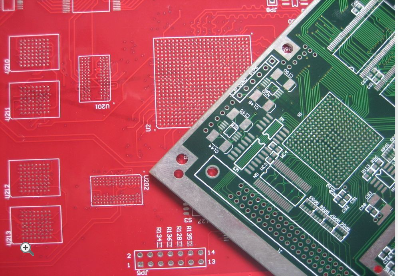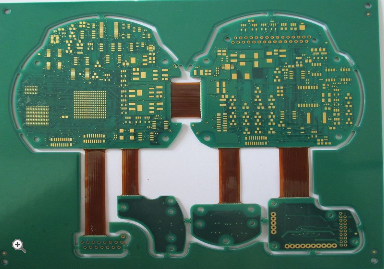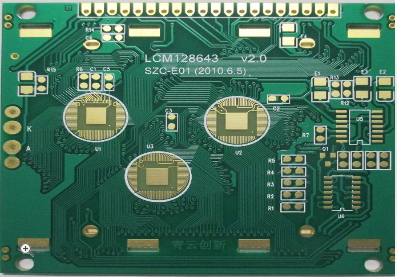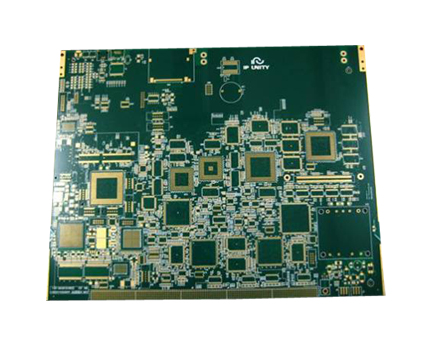-
 Agriculture
Agriculture
-
 Health-Care
Health-Care
-
 Environment
Environment
-
 Construction-Real-Estate
Construction-Real-Estate
-
 Tools-Hardware
Tools-Hardware
-
 Home-Garden
Home-Garden
-
 Furniture
Furniture
-
 Luggage-Bags-Cases
Luggage-Bags-Cases
-
 Medical-devices-Supplies
Medical-devices-Supplies
-
 Gifts-Crafts
Gifts-Crafts
-
 Sports-Entertainment
Sports-Entertainment
-
 Food-Beverage
Food-Beverage
-
 Vehicles-Transportation
Vehicles-Transportation
-
 Power-Transmission
Power-Transmission
-
 Material-Handling
Material-Handling
-
 Renewable-Energy
Renewable-Energy
-
 Safety
Safety
-
 Testing-Instrument-Equipment
Testing-Instrument-Equipment
-
 Construction-Building-Machinery
Construction-Building-Machinery
-
 Pet-Supplies
Pet-Supplies
-
 Personal-Care-Household-Cleaning
Personal-Care-Household-Cleaning
-
 Vehicle-Accessories-Electronics-Tools
Vehicle-Accessories-Electronics-Tools
-
 School-Office-Supplies
School-Office-Supplies
-
 Packaging-Printing
Packaging-Printing
-
 Mother-Kids-Toys
Mother-Kids-Toys
-
 Business-Services
Business-Services
-
 Commercial-Equipment-Machinery
Commercial-Equipment-Machinery
-
 Apparel-Accessories
Apparel-Accessories
-
 Security
Security
-
 Shoes-Accessories
Shoes-Accessories
-
 Vehicle-Parts-Accessories
Vehicle-Parts-Accessories
-
 Jewelry-Eyewear-Watches-Accessories
Jewelry-Eyewear-Watches-Accessories
-
 Lights-Lighting
Lights-Lighting
-
 Fabric-Textile-Raw-Material
Fabric-Textile-Raw-Material
-
 Fabrication-Services
Fabrication-Services
-
 Industrial-Machinery
Industrial-Machinery
-
 Consumer-Electronics
Consumer-Electronics
-
 Electrical-Equipment-Supplies
Electrical-Equipment-Supplies
-
 Electronic-Components-Accessories-Telecommunications
Electronic-Components-Accessories-Telecommunications
-
 Home-Appliances
Home-Appliances
-
 Beauty
Beauty
-
 Chemicals
Chemicals
-
 Rubber-Plastics
Rubber-Plastics
-
 Metals-Alloys
Metals-Alloys
- Masonry Materials
- Curtain Walls & Accessories
- Earthwork Products
- Fireproofing Materials
- Heat Insulation Materials
- Plastic Building Materials
- Building Boards
- Soundproofing Materials
- Timber
- Waterproofing Materials
- Balustrades & Handrails
- Bathroom & Kitchen
- Flooring & Accessories
- Tiles & Accessories
- Door, Window & Accessories
- Fireplaces & Stoves
- Floor Heating Systems & Parts
- Stairs & Stair Parts
- Ceilings
- Elevators & Escalators
- Stone
- Countertops, Vanity Tops & Table Tops
- Mosaics
- Metal Building Materials
- Multifunctional Materials
- Ladders & Scaffoldings
- Mouldings
- Corner Guards
- Decorative Films
- Formwork
- Building & Industrial Glass
- Other Construction & Real Estate
- Wallpapers/Wall panels
- HVAC System & Parts
- Outdoor Facilities
- Prefabricated Buildings
- Festive & Party Supplies
- Bathroom Products
- Household Sundries
- Rain Gear
- Garden Supplies
- Household Cleaning Tools & Accessories
- Lighters & Smoking Accessories
- Home Storage & Organization
- Household Scales
- Smart Home Improvement
- Home Textiles
- Kitchenware
- Drinkware & Accessories
- Dinnerware, Coffee & Wine
- Home Decor
- Golf
- Fitness & Body Building
- Amusement Park Facilities
- Billiards, Board Game,Coin Operated Games
- Musical Instruments
- Outdoor Affordable Luxury Sports
- Camping & Hiking
- Fishing
- Sports Safety&Rehabilitation
- Ball Sports Equipments
- Water Sports
- Winter Sports
- Luxury Travel Equipments
- Sports Shoes, Bags & Accessories
- Cycling
- Other Sports & Entertainment Products
- Artificial Grass&Sports Flooring&Sports Court Equipment
- Scooters
- Food Ingredients
- Honey & Honey Products
- Snacks
- Nuts & Kernels
- Seafood
- Plant & Animal Oil
- Beverages
- Fruit & Vegetable Products
- Frog & Escargot
- Bean Products
- Egg Products
- Dairy Products
- Seasonings & Condiments
- Canned Food
- Instant Food
- Baked Goods
- Other Food & Beverage
- Meat & Poultry
- Confectionery
- Grain Products
- Feminie Care
- Hair Care & Styling
- Body Care
- Hands & Feet Care
- Hygiene Products
- Men's Grooming
- Laundry Cleaning Supplies
- Travel Size & Gift Sets
- Room Deodorizers
- Other Personal Care Products
- Pest Control Products
- Special Household Cleaning
- Floor Cleaning
- Kitchen & Bathroom Cleaning
- Oral Care
- Bath Supplies
- Yellow Pages
- Correction Supplies
- Office Binding Supplies
- Office Cutting Supplies
- Board Erasers
- Office Adhesives & Tapes
- Education Supplies
- Pencil Cases & Bags
- Notebooks & Writing Pads
- File Folder Accessories
- Calendars
- Writing Accessories
- Commercial Office Supplies
- Pencil Sharpeners
- Pens
- Letter Pad/Paper
- Paper Envelopes
- Desk Organizers
- Pencils
- Markers & Highlighters
- Filing Products
- Art Supplies
- Easels
- Badge Holder & Accessories
- Office Paper
- Printer Supplies
- Book Covers
- Other Office & School Supplies
- Stationery Set
- Boards
- Clipboards
- Stamps
- Drafting Supplies
- Stencils
- Electronic Dictionary
- Books
- Map
- Magazines
- Calculators
- Baby & Toddler Toys
- Educational Toys
- Classic Toys
- Dress Up & Pretend Play
- Toy Vehicle
- Stuffed Animals & Plush Toys
- Outdoor Toys & Structures
- Balloons & Accessories
- Baby Food
- Children's Clothing
- Baby Supplies & Products
- Maternity Clothes
- Kids Shoes
- Baby Care
- Novelty & Gag Toys
- Dolls & Accessories
- Puzzle & Games
- Blocks & Model Building Toys
- Toddler Clothing
- Baby Clothing
- Kids' Luggage & Bags
- Arts, Crafts & DIY Toys
- Action & Toy Figures
- Baby Appliances
- Hobbies & Models
- Remote Control Toys
- Promotional Toys
- Pregnancy & Maternity
- Hygiene Products
- Kid's Textile&Bedding
- Novelty & Special Use
- Toy Weapons
- Baby Gifts
- Baby Storage & Organization
- Auto Drive Systems
- ATV/UTV Parts & Accessories
- Marine Parts & Accessories
- Other Auto Parts
- Trailer Parts & Accessories
- Auto Transmission Systems
- Train Parts & Accessories
- Universal Parts
- Railway Parts & Accessories
- Auto Brake Systems
- Aviation Parts & Accessories
- Truck Parts & Accessories
- Auto Suspension Systems
- Auto Lighting Systems
- New Energy Vehicle Parts & Accessories
- Auto Steering Systems
- Wheels, Tires & Accessories
- Bus Parts & Accessories
- Auto Performance Parts
- Cooling System
- Go-Kart & Kart Racer Parts & Accessories
- Air Conditioning Systems
- Heavy Duty Vehicle Parts & Accessories
- Auto Electrical Systems
- Auto Body Systems
- Auto Engine Systems
- Container Parts & Accessories
- Motorcycle Parts & Accessories
- Refrigeration & Heat Exchange Equipment
- Machine Tool Equipment
- Food & Beverage Machinery
- Agricultural Machinery & Equipment
- Apparel & Textile Machinery
- Chemical Machinery
- Packaging Machines
- Paper Production Machinery
- Plastic & Rubber Processing Machinery
- Industrial Robots
- Electronic Products Machinery
- Metal & Metallurgy Machinery
- Woodworking Machinery
- Home Product Manufacturing Machinery
- Machinery Accessories
- Environmental Machinery
- Machinery Service
- Electrical Equipment Manufacturing Machinery
- Industrial Compressors & Parts
- Tobacco & Cigarette Machinery
- Production Line
- Used Industrial Machinery
- Electronics Production Machinery
- Other Machinery & Industrial Equipment
- Camera, Photo & Accessories
- Portable Audio, Video & Accessories
- Television, Home Audio, Video & Accessories
- Video Games & Accessories
- Mobile Phone & Accessories
- Electronic Publications
- Earphone & Headphone & Accessories
- Speakers & Accessories
- Smart Electronics
- TV Receivers & Accessories
- Mobile Phone & Computer Repair Parts
- Chargers, Batteries & Power Supplies
- Used Electronics
- VR, AR, MR Hardware & Software
- Projectors & Presentation Equipments
- Other Consumer Electronics
- Cables & Commonly Used Accessories
- Computer Hardware & Software
- Displays, Signage and Optoelectronics
- Discrete Semiconductors
- Wireless & IoT Module and Products
- Telecommunications
- Connectors, Terminals & Accessories
- Development Boards, Electronic Modules and Kits
- Circuit Protection
- Sensors
- Isolators
- Audio Components and Products
- Integrated Circuits
- Power Supplies
- Relays
- RF, Microwave and RFID
- Electronic Accessories & Supplies
- Passive Components
- PCB & PCBA
- Air Quality Appliances
- Home Appliance Parts
- Heating & Cooling Appliances
- Small Kitchen Appliances
- Laundry Appliances
- Water Heaters
- Water Treatment Appliances
- Refrigerators & Freezers
- Personal Care & Beauty Appliances
- Major Kitchen Appliances
- Cleaning Appliances
- Second-hand Appliances
- Smart Home Appliances
- Other Home Appliances
- Energy Chemicals
- Inorganic Chemicals
- Basic Organic Chemicals
- Agrochemicals
- Admixture & Additives
- Catalysts & Chemical Auxiliary Agents
- Pigments & Dyestuff
- Coating & Paint
- Daily Chemicals
- Polymer
- Organic Intermediate
- Adhesives & Sealants
- Chemical Waste
- Biological Chemical Products
- Surface Treatment Chemicals
- Painting & Coating
- Chemical Reagents
- Flavor & Fragrance
- Non-Explosive Demolition Agents
- Other Chemicals
- Custom Chemical Services
High Frequency Double Sided Multi Layer Ceramic Substrate Optimized For RF And Microwave Communication Systems
In the rapidly evolving landscape of wireless technology, the demand for high-performance components in radio frequency (RF) and microwave communication systems has never been greater. Central to this advancement is the High Frequency Double Sided Multi Layer Ceramic Substrate, a specialized material engineered to meet the stringent requirements of modern applications such as 5G networks, satellite communications, radar systems, and Internet of Things (IoT) devices. This substrate represents a critical innovation, offering superior electrical properties, thermal management, and miniaturization capabilities that are essential for next-generation technologies. As global connectivity expands and data rates soar, understanding the role of this optimized ceramic substrate becomes paramount for engineers, researchers, and industry professionals seeking to push the boundaries of efficiency and reliability in high-frequency environments.
The development of such substrates stems from decades of research in materials science and electronics, where traditional substrates like FR-4 or standard ceramics often fall short in high-frequency scenarios due to issues like signal loss, thermal instability, or size constraints. By leveraging advanced ceramic compositions and multi-layer architectures, this substrate addresses these challenges head-on, enabling designs that are not only more compact but also more robust. Its optimization for RF and microwave systems ensures minimal dielectric loss, stable performance across a wide frequency range, and enhanced power handling, making it a cornerstone for applications where precision and durability are non-negotiable. This article delves into the key aspects of this technology, providing a comprehensive overview of its features, benefits, and practical implications.
Material Composition and Electrical Properties
The High Frequency Double Sided Multi Layer Ceramic Substrate is crafted from advanced ceramic materials, typically alumina (Al2O3) or aluminum nitride (AlN), which are known for their excellent dielectric properties. These materials exhibit a low dielectric constant (Dk) and low dissipation factor (Df), critical for minimizing signal loss and maintaining signal integrity at high frequencies. For instance, alumina substrates often have a Dk ranging from 9 to 10, while aluminum nitride can offer even lower values, reducing parasitic capacitance and enabling faster signal propagation. This optimization allows the substrate to operate efficiently in frequency bands from a few gigahertz up to millimeter-wave ranges, which are essential for 5G and beyond.
Moreover, the double-sided and multi-layer design incorporates conductive layers, usually made of copper or silver, which are patterned to form intricate circuits. This architecture supports complex RF functionalities, such as impedance matching and filtering, while the ceramic base ensures thermal stability. The combination of these materials results in a substrate that not only handles high power levels with minimal loss but also resists environmental factors like humidity and temperature fluctuations, ensuring long-term reliability in demanding applications.
Thermal Management and Reliability
One of the standout features of this ceramic substrate is its exceptional thermal conductivity, which is vital for dissipating heat generated by high-power RF components. Materials like aluminum nitride boast thermal conductivity values as high as 150-180 W/mK, far surpassing traditional substrates. This capability prevents overheating, reduces thermal stress, and enhances the lifespan of integrated devices such as power amplifiers and oscillators. In multi-layer configurations, thermal vias and heat spreaders are often integrated to further improve heat dissipation, ensuring that the substrate maintains stable performance even under continuous operation.
Additionally, the ceramic material's coefficient of thermal expansion (CTE) is closely matched to that of semiconductor devices, minimizing mechanical stress during temperature cycles. This compatibility reduces the risk of delamination or cracking, which is common in mismatched assemblies. Rigorous testing under extreme conditions, including thermal shock and humidity exposure, confirms the substrate's durability, making it suitable for aerospace, military, and automotive applications where failure is not an option. The reliability afforded by these thermal properties translates to lower maintenance costs and higher system uptime.
Design Flexibility and Miniaturization
The multi-layer aspect of this substrate allows for unprecedented design flexibility, enabling the integration of multiple circuit layers within a compact form factor. This is achieved through precise fabrication techniques, such as screen printing, laser drilling, and co-firing processes, which create vias and interconnects between layers. Designers can incorporate passive components like capacitors and resistors directly into the substrate, reducing the need for external parts and saving valuable board space. This miniaturization is crucial for modern devices, such as smartphones and IoT sensors, where size and weight constraints are paramount.
Furthermore, the double-sided configuration permits the placement of components on both sides of the substrate, optimizing layout efficiency and improving signal routing. Advanced simulation tools aid in optimizing the design for specific RF parameters, such as return loss and insertion loss, ensuring that the final product meets performance targets. This flexibility also supports customization for niche applications, allowing engineers to tailor the substrate to unique frequency bands or environmental conditions, thereby accelerating innovation in fields like medical devices or autonomous vehicles.
Applications in RF and Microwave Systems
This optimized ceramic substrate finds extensive use in a variety of high-frequency applications, starting with 5G infrastructure, where it enables base stations and antennas to handle millimeter-wave signals with low latency and high efficiency. In satellite communications, its ability to operate in harsh environments with minimal signal degradation makes it ideal for transponders and phased array antennas. Radar systems, both military and civilian, benefit from the substrate's high power handling and thermal stability, ensuring accurate detection and tracking over long distances.
Beyond these, the substrate is increasingly adopted in emerging technologies like autonomous vehicles, where RF sensors require reliable performance under varying conditions, and in medical equipment such as MRI machines, which demand precise signal control. The IoT ecosystem also leverages this technology for smart devices that communicate wirelessly, emphasizing low power consumption and compact design. As these applications continue to evolve, the High Frequency Double Sided Multi Layer Ceramic Substrate will play a pivotal role in enabling faster, more connected, and efficient systems worldwide.
REPORT































































































































































































































































































































































































































































































































































































